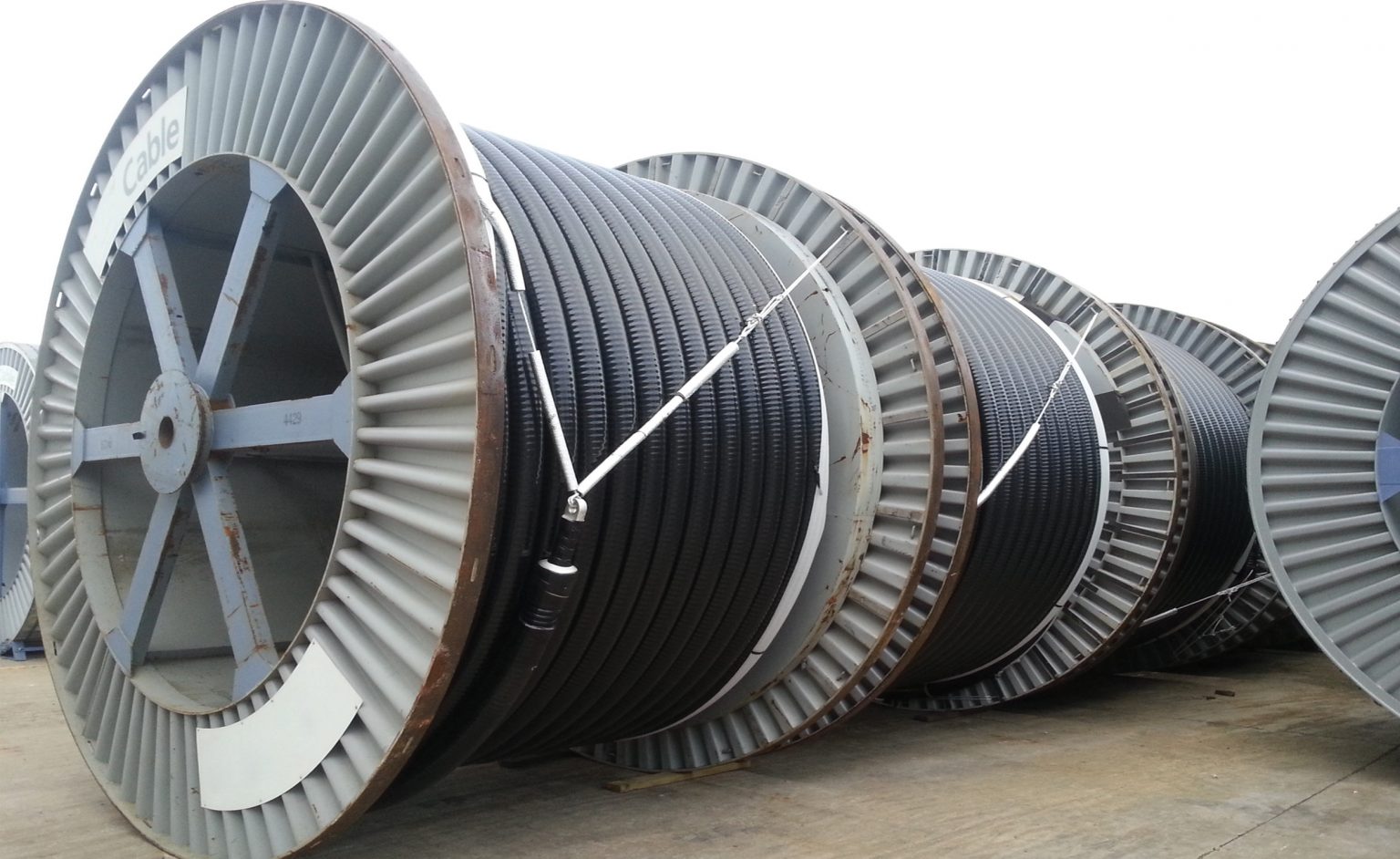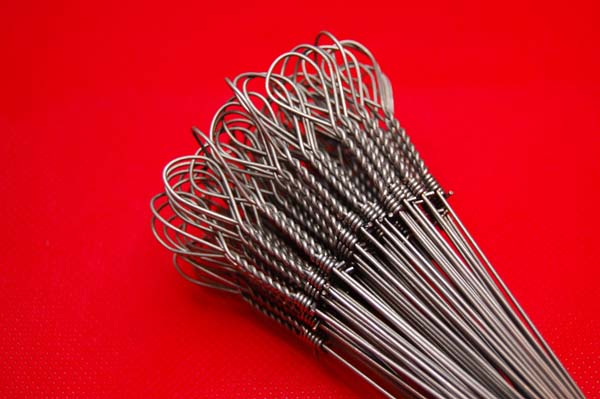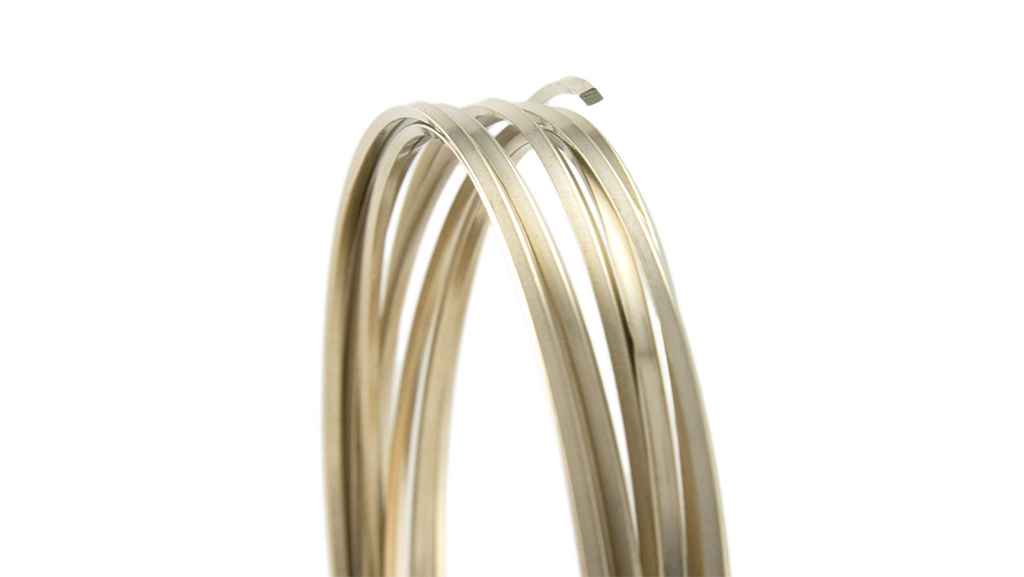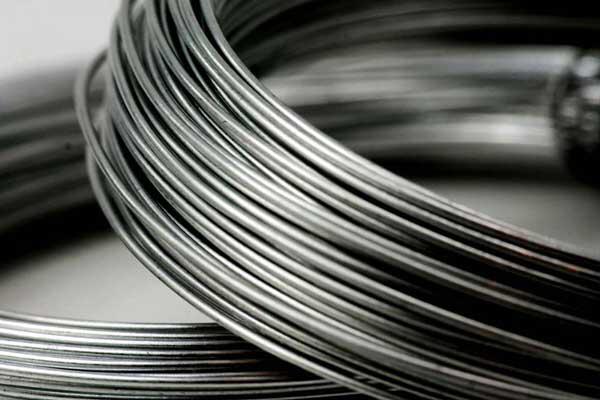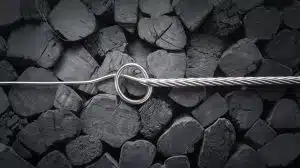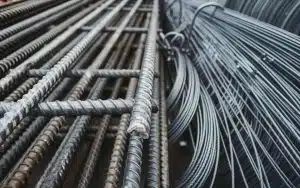Production of non-steel wires: a comprehensive guide to non-steel wires – part 2
Introduction to the Second Part of the Comprehensive Guide to Non-Steel Wires:
In the first part of this comprehensive guide, we explored the diverse range of non-Steel wires and their extensive applications. Now, in the second and final part of this series, we invite you to expand your knowledge horizons. This section not only delves deeper into our understanding of non-Steel wires but also encompasses crucial considerations for the purchase and use of these products.
We are well aware that the correct choice of wire can have a significant impact on your industrial and home projects. Therefore, it is with great enthusiasm that we invite you to explore this section. Join us as we equip you with comprehensive and practical information to make more informed choices and maximize your experience with the purchase and use of non-Steel wires.
We assure you that this section, like the first, has been compiled with meticulous attention to detail and a commitment to quality. So, embark on this journey of knowledge with enthusiasm and join the growing community of informed and responsible users who are always striving for the best choices.
Thank you for your continued support.
Processing and Manufacturing of Non-Steel Wires:
This section provides a detailed examination of the manufacturing and processing techniques employed in the production of non-Steel wires. The process commences with the selection of raw materials and progresses through a series of meticulously designed stages to yield the final product. Furthermore, various processing and heat treatment methods are utilized to optimize the desired properties of the wires, including strength, ductility, and corrosion resistance.
The wire manufacturing process encompasses a sequence of intricate technical steps, each precisely engineered to ensure that the final product possesses the targeted physical and mechanical characteristics. This process not only entails the transformation of raw materials into wires but also involves the enhancement of wire properties through heat treatment and other processing methods. The subsequent sections explore the key stages involved in the production and processing of non-Steel wires.
Stages of Wire Production from Raw Material to Final Product:
- Raw Material Selection: The initial step in wire production is the selection of high-quality raw materials, which may include copper, aluminum, titanium, or other non-Steel alloys.
- Melting and Casting: The raw materials are melted in furnaces and subsequently cast into molds to produce billets of specific dimensions.
- Hot Rolling: The billets produced in the preceding stage undergo hot rolling at elevated temperatures to reduce their thickness and attain the desired wire shape.
- Cold Drawing: To achieve more precise dimensions and enhance mechanical properties, the wires are drawn through dies with specific dimensions in a cold drawing process.
- Heat Treatment: To improve properties such as strength, ductility, and corrosion resistance, the wires may be subjected to heat treatment procedures.
Processing and Heat Treatment Methods:
- Annealing (Softening): This process involves heating the wire to a specific temperature, maintaining it at that temperature for a predetermined period, and then slowly cooling it to increase ductility.
- Hardening and Aging: These processes are implemented to augment the wire’s strength and hardness. Hardening involves rapidly heating the wire followed by cooling; aging entails heating the wire at a lower temperature for an extended period.
- Precipitation Hardening: This process is applied to alloy wires to enhance their strength by creating precise precipitate phases.
The manufacturing and processing of non-Steel wires encompasses a series of intricate and precise steps, each aimed at improving the wire’s physical and mechanical properties. From the selection of raw materials to advanced heat treatment techniques, each stage is meticulously designed to ensure that the final product not only possesses the desired characteristics but also meets the specific requirements of various industrial applications.

International Standards and Technical Specifications for Non-Steel Wires:
This section delves into a comprehensive analysis of the standards and technical specifications pertaining to non-Steel wires. International standards play a pivotal role in ensuring product quality, safety, and integrity, serving as a crucial guide for selecting the appropriate wires for the technical requirements of diverse projects. We will explore these standards and the methods for choosing wires that are tailored to specific projects.
Key Role of International Standards:
International standards define the guidelines and criteria employed in the design, production, and testing of non-Steel wires. These standards ensure that wires are comparable, reliable, and compatible with their application environments. They also assist engineers and designers in selecting wires that precisely match the technical and performance requirements of their projects.
Overview of Relevant International Standards:
International standards for non-Steel wires are issued by various organizations, such as ASTM (American Society for Testing and Materials), ISO (International Organization for Standardization), and DIN (German Institute for Standardization). These standards may encompass criteria for mechanical properties, chemical composition, dimensions, tolerances, and testing methods. For instance, the ISO 9001 standard can be utilized to assure the quality of wire production processes, while ASTM B211 can be used to determine the properties and dimensions of aluminum wires.
Selecting Wires Aligned with Project Requirements:
Selecting the suitable wire for a specific project necessitates a thorough understanding of the project’s technical and performance requirements. This process entails several steps:
- Identifying Required Properties: This involves recognizing the necessary mechanical, chemical, and physical properties for the wire, such as tensile strength, corrosion resistance, and electrical conductivity.
- Compliance with Standards: Reviewing relevant international standards to identify specifications that align with the project’s requirements.
- Selecting Suppliers: Choosing suppliers whose products comply with the desired standards and possess the capacity to provide wires with the required quality and technical specifications.
- Sample Inspection and Testing: Prior to final approval, examining samples and conducting necessary tests to ensure that the chosen wire genuinely meets the project’s criteria.
Critical Importance of Standards and Technical Specifications:
Standards and technical specifications play a vital role in guaranteeing the quality and performance of non-Steel wires in various industrial applications. Selecting wires that are aligned with the technical requirements of projects demands a profound understanding of these standards and a meticulous approach to matching the wire’s properties with the required criteria. This approach ensures that the final products are not only efficient and safe but also meet the highest quality and performance standards.

Selection and Procurement Criteria for Non-Steel Wires:
This section focuses on the meticulous examination of the criteria involved in the selection and procurement of non-Steel wires, emphasizing the significance of choosing a reliable supplier, using APIT Company as an example of a reputable supplier. The correct selection of non-Steel wires plays a crucial role in the quality, durability, and efficiency of the final products. Moreover, selecting a trusted supplier with a strong track record in the industry can guarantee that the purchased products adhere to the highest quality and performance standards.
The Importance of Quality Non-Steel Wires:
Selecting and purchasing high-quality non-Steel wires is of paramount importance, as the physical and mechanical properties of the wires directly impact the performance and longevity of their end-use applications. In this regard, choosing a reliable supplier like APIT Company, which possesses substantial experience and a proven track record of delivering quality products, can provide peace of mind for buyers.
Key Considerations for Procuring Quality Non-Steel Wires:
- Technical Specifications and Standards: Prior to making a purchase, ensure that the wires comply with the international standards required for your project, such as ASTM, ISO, or DIN.
- Chemical Composition and Mechanical Properties: Verify that the chosen wires possess the necessary mechanical properties, such as tensile strength, corrosion resistance, and desired flexibility.
- Supplier’s History and Reputation: Selecting a supplier with a strong track record and reputation in the industry, like APIT Company, can ensure that the products are of high quality.
The Significance of Suppliers and Their Industry Reputation:
Reputable and established suppliers, such as APIT Company, not only offer high-quality products but also provide technical support and consultation services that can be highly valuable in selecting the appropriate wires for specific project requirements. Reliable suppliers can also ensure that their products align with the latest industry and technical standards.
The Utmost Importance of Selecting a Reliable Supplier:
The selection and procurement of high-quality non-Steel wires from a reliable and experienced supplier, like Apit Company, is of paramount significance. This choice ensures that the purchased products not only meet the highest quality and performance standards but also represent the most suitable option for fulfilling the specific technical and performance requirements of your projects.

Challenges and Future of Non-Steel Wires:
This section explores the challenges and future of non-Steel wires, focusing on the environmental and economic challenges facing the industry and examining the role of emerging technologies in shaping its future. Due to their unique properties and wide range of applications, non-Steel wires hold significant importance, yet they face challenges similar to many other industrial sectors that require effective management.
Non-Steel wires, encompassing copper, aluminum, titanium, and other alloy wires, are utilized in diverse industries due to their versatile applications and exceptional physical and mechanical properties. However, the production and use of these wires present challenges that demand attention and innovative solutions.
Environmental and Economic Challenges:
One of the major challenges confronting the non-Steel wire industry pertains to environmental issues. The production of these wires can deplete natural resources and contribute to environmental pollution. Additionally, manufacturing processes are energy-intensive and result in greenhouse gas emissions. From an economic perspective, fluctuations in raw material prices and high production costs can pose challenges for manufacturers.
Emerging Technologies and Their Impact on the Wire Industry:
To address these challenges, emerging technologies play a pivotal role in enhancing the efficiency and sustainability of the non-Steel wire industry. For instance, adopting advanced manufacturing processes such as cold rolling and cold drawing can help reduce energy consumption and improve the mechanical properties of wires. Recycling technologies also facilitate material recovery and reduce raw material costs.
Furthermore, advancements in nanomaterials and advanced surface technologies can lead to improved wire properties, including corrosion resistance and tensile strength. These technologies contribute to the production of higher-performance, lighter-weight wires that can find application in new and advanced applications.
The non-Steel wire industry currently faces environmental and economic challenges, but emerging technologies have the potential to significantly impact its efficiency and sustainability. From advanced manufacturing processes to recycling technologies and nanomaterials, these technologies can help address current challenges and pave the way for a brighter future for the non-Steel wire industry.

Conclusion: Importance and Role of Non-Steel Wires in the Industry:
This section concludes and summarizes the significance and position of non-Steel wires in the industry, offering a perspective on the future developments in this sector. Non-Steel wires, with their unique properties and extensive applications, have played a crucial role in advancing technology and industrial development. The future of this industry will witness significant transformations influenced by emerging technologies, environmental changes, and economic shifts.
Importance of Non-Steel Wires:
Non-Steel wires possess exceptional characteristics such as high electrical conductivity, lightweight, corrosion resistance, and high strength, rendering them highly valuable. These wires find application in a wide range of industries, from electrical and electronics to transportation, construction, decoration, and medicine. Continuous advancements in the manufacturing and processing technologies of these wires have further contributed to enhancing their properties and performance.
Key Role of Non-Steel Wires:
With the diversity of materials and properties they offer, non-Steel wires play a pivotal role in improving the quality and efficiency of numerous products and systems. They serve as essential materials for industrial innovation and accelerate the development of new technologies. Their significance in energy efficiency and sustainability, particularly in today’s world with heightened environmental concerns, has become increasingly evident.
Future Outlook for the Non-Steel Wire Industry:
The future of the non-Steel wire industry will be shaped by multiple factors, including technological advancements, environmental changes, and evolving market demands. Emerging technologies, such as nanomaterials and advanced manufacturing processes, will have the potential to significantly improve the physical and mechanical properties of wires, enabling new applications. Additionally, focusing on sustainability and reducing the environmental impact of production, including through recycling and reuse, will play a significant role in shaping the future of this industry.
Conclusion:
Non-Steel wires, due to their unique properties and widespread applications, have played a vital role in technological and industrial advancements. Considering the technological transformations, shifting market needs, and environmental concerns, this industry is expected to witness further innovation and progress that will contribute to enhanced sustainability and efficiency. Recognizing and adapting to these developments will be crucial for manufacturers, consumers, and all stakeholders involved in this industry.
Recommended resources for searching:
Scientific databases and research articles:
ScienceDirect: www.sciencedirect.com
Wiley Online Library: www.onlinelibrary.wiley.com
These databases contain scientific and research articles on the latest developments and innovations in the field of non-steel wires.
Specialized websites in the field of engineering and materials:
Engineering Toolbox: www.engineeringtoolbox.com
MatWeb: www.matweb.com
These sources can provide detailed technical data and useful information on material properties, manufacturing processes and various applications of non-steel wire.
By using these resources, you can expand your knowledge about non-steel wires and obtain reliable and up-to-date information.
Frequently Asked Questions about Non-Steel Wires:
This section presents several frequently asked questions (FAQs) about non-Steel wires along with their corresponding answers. These FAQs aim to provide you with a broader perspective on this topic and help you gain a better understanding of the importance, applications, and challenges associated with non-Steel wires.
Non-Steel wires are typically made from materials such as copper, aluminum, and titanium, which possess different properties compared to steel. These differences may include better electrical conductivity, lighter weight, and higher corrosion resistance, making them more suitable for specific applications.
Corrosion resistance is crucial for the longevity and durability of wires in harsh environmental conditions such as saltwater, acidic or alkaline environments, and high temperatures. This property ensures that the wires perform reliably without requiring extensive maintenance or replacement.
Various industries, including electrical and electronics, transportation (including aerospace and automotive), construction and decoration, and medical and dental fields, use non-Steel wires due to their unique properties that are desirable in these applications.
Emerging technologies, such as nanotechnology and advanced manufacturing processes, contribute to improving the mechanical and physical properties of wires, enhance production efficiency, and facilitate recycling and reuse. These impacts lead to increased sustainability and reduced environmental impact.
The primary challenges include environmental and economic issues, fluctuations in raw material prices, the need for more sustainable production technologies, and compliance with international standards. Addressing these challenges requires continuous innovation and advancements in technology and management.
These FAQs help you familiarize yourself with the concept, applications, challenges, and future of non-Steel wires, providing you with a broader perspective on their significance in advancing technology and industry.


